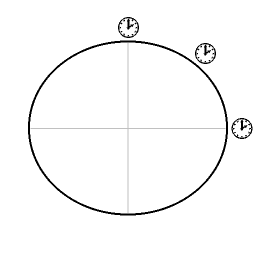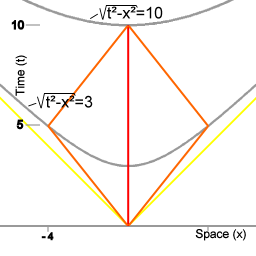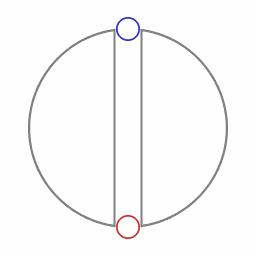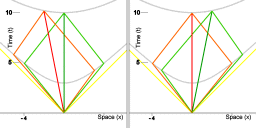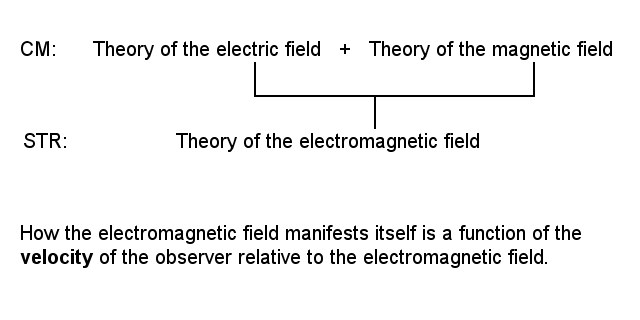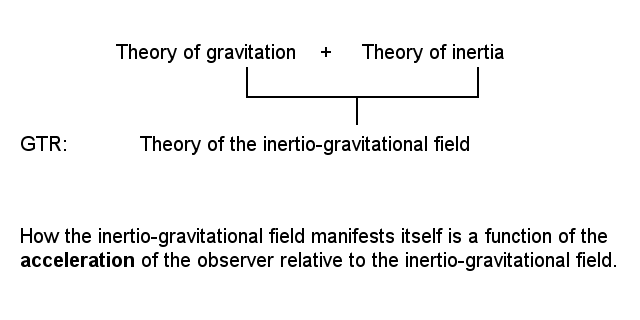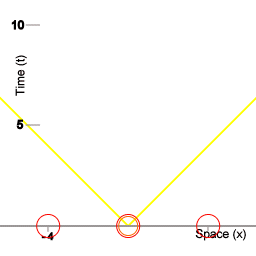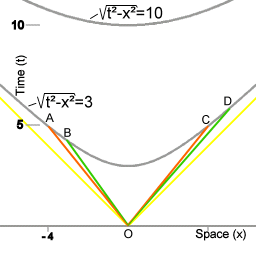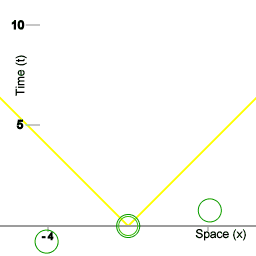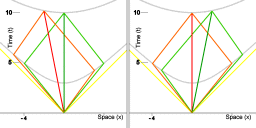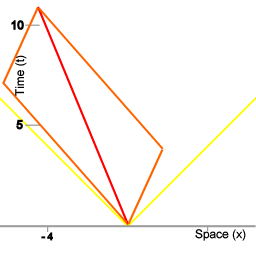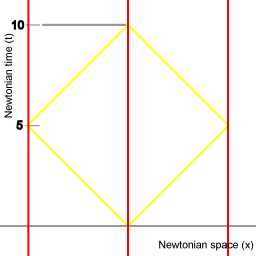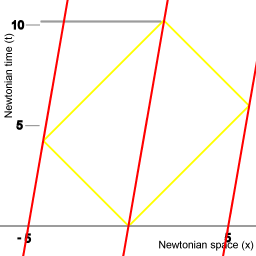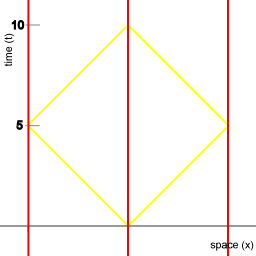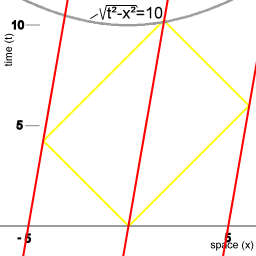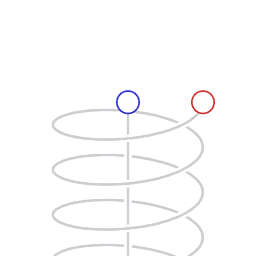In 1901, when the first Nobel Prizes were awarded, the classical areas of physics seemed to rest on a firm basis built by great 19th century physicists and chemists. Hamilton had formulated a very general description of the dynamics of rigid bodies as early as the 1830s. Carnot, Joule, Kelvin and Gibbs had developed thermodynamics to a high degree of perfection during the second half of the century.
Maxwell's famous equations had been accepted as a general description of electromagnetic phenomena and had been found to be also applicable to optical radiation and the radio waves recently discovered by Hertz.
Everything, including the wave phenomena, seemed to fit quite well into a picture built on mechanical motion of the constituents of matter manifesting itself in various macroscopic phenomena. Some observers in the late 19th century actually expressed the view that, what remained for physicists to do was only to fill in minor gaps in this seemingly well-established body of knowledge.
However, it would very soon turn out that this satisfaction with the state of physics was built on false premises. The turn of the century became a period of observations of phenomena that were completely unknown up to then, and radically new ideas on the theoretical basis of physics were formulated. It must be regarded as a historical coincidence, probably never foreseen by Alfred Nobel himself, that the Nobel Prize institution happened to be created just in time to enable the prizes to cover many of the outstanding contributions that opened new areas of physics in this period.
One of the unexpected phenomena during the last few years of the 19th century, was the discovery of X-rays by
Wilhelm Conrad Röntgen in 1895, which was awarded the first Nobel Prize in Physics (1901). Another was the discovery of radioactivity by
Antoine Henri Becquerel in 1896, and the continued study of the nature of this radiation by
Marie and Pierre Curie. The origin of the X-rays was not immediately understood at the time, but it was realized that they indicated the existence of a hitherto concealed world of phenomena (although their practical usefulness for medical diagnosis was evident enough from the beginning). The work on radioactivity by Becquerel and the Curies was rewarded in 1903 (with one half to Becqurel and the other half shared by the Curies), and in combination with the additional work by
Ernest Rutherford (who got the Chemistry Prize in 1908) it was understood that atoms, previously considered as more or less structureless objects, actually contained a very small but compact nucleus. Some atomic nuclei were found to be unstable and could emit the

or

radiation observed. This was a revolutionary insight at the time, and it led in the end, through parallel work in other areas of physics, to the creation of the first useful picture of the structure of atoms.
In 1897,
Joseph J. Thomson, who worked with rays emanating from the cathode in partly evacuated discharge tubes, identified the carriers of electric charge. He showed that these rays consisted of discrete particles, later called "electrons". He measured a value for the ratio between their mass and (negative) charge, and found that it was only a very small fraction of that expected for singly charged atoms. It was soon realized that these lightweight particles must be the building blocks that, together with the positively charged nuclei, make up all different kinds of atoms. Thomson received his Prize in 1906. By then,
Philipp E.A. von Lenard had already been acknowledged the year before (1905) for elucidating other interesting properties of the cathodic rays, such as their ability to penetrate thin metal foils and produce fluorescence. Soon thereafter (in 1912)
Robert A. Millikan made the first precision measurement of the electron charge with the oil-drop method, which led to a Physics Prize for him in 1923. Millikan was also rewarded for his works on the photoelectric effect.
In the beginning of the century, Maxwell's equations had already existed for several decades, but many questions remained unanswered: what kind of medium propagated electromagnetic radiation (including light) and what carriers of electric charges were responsible for light emission?
Albert A. Michelson had developed an interferometric method, by which distances between objects could be measured as a number of wavelengths of light (or fractions thereof). This made comparison of lengths much more exact than what had been possible before. Many years later, the Bureau International de Poids et Mesures, Paris (BINP) defined the meter unit in terms of the number of wavelengths of a particular radiation instead of the meter prototype. Using such an interferometer, Michelson had also performed a famous experiment, together with E. W. Morley, from which it could be concluded that the velocity of light is independent of the relative motion of the light source and the observer. This fact refuted the earlier assumption of an ether as a medium for light propagation. Michelson received the Physics Prize in 1907.
The mechanisms for emission of light by carriers of electric charge was studied by
Hendrik A. Lorentz, who was one of the first to apply Maxwell's equations to electric charges in matter. His theory could also be applied to the radiation caused by vibrations in atoms and it was in this context that it could be put to its first crucial test. As early as 1896
Pieter Zeeman, who was looking for possible effects of electric and magnetic fields on light, made an important discovery namely, that spectral lines from sodium in a flame were split up into several components when a strong magnetic field was applied. This phenomenon could be given a quite detailed interpretation by Lorentz's theory, as applied to vibrations of the recently identified electrons, and Lorentz and Zeeman shared the Physics Prize in 1902, i.e. even before Thomson's discovery was rewarded. Later,
Johannes Stark demonstrated the direct effect of electric fields on the emission of light, by exposing beams of atoms ("anodic rays", consisting of atoms or molecules) to strong electric fields. He observed a complicated splitting of spectral lines as well as a Doppler shift depending on the velocities of the emitters. Stark received the 1919 Physics Prize.
With this background, it became possible to build detailed models for the atoms, objects that had existed as concepts ever since antiquity but were considered more or less structureless in classical physics. There existed already, since the middle of the previous century, a rich empirical material in the form of characteristic spectral lines emitted in the visible domain by different kinds of atoms, and to this was added the characteristic X-ray radiation discovered by
Charles G. Barkla (Physics Prize in 1917, awarded in 1918), which after the clarification of the wave nature of this radiation and its diffraction by
Max von Laue (Physics Prize in 1914), also became an important source of information on the internal structure of atoms.
Barkla's characteristic X-rays were secondary rays, specific for each element exposed to radiation from X-ray tubes (but independent of the chemical form of the samples).
Karl Manne G. Siegbahn realized that measuring characteristic X-ray spectra of all the elements would show systematically how successive electron shells are added when going from the light elements to the heavier ones. He designed highly accurate spectrometers for this purpose by which energy differences between different shells, as well as rules for radiative transitions between them, could be established. He received the Physics Prize in 1924 (awarded in 1925). However, it would turn out that a deeper understanding of the atomic structure required a much further departure from the habitual concepts of classical physics than anyone could have imagined.
Classical physics assumes continuity in motion as well as in the gain or loss of energy. Why then, do atoms send out radiations with sharp wavelengths? Here, a parallel line of development, also with its roots in late 19th century physics, had given important clues for interpretation.
Wilhelm Wien studied the "black-body" radiation from hot solid bodies (which in contrast to radiation from atoms in gases, has a continuous distribution of frequencies). Using classical electrodynamics, he derived an expression for the frequency distribution of this radiation and the shift of the maximum intensity wavelength, when the temperature of a black body is changed (the Wien displacement law, useful for instance in determining the temperature of the sun). He was awarded the Physics Prize in 1911.
However, Wien could not derive a distribution formula that agreed with experiments for both short and long wavelengths. The problem remained unexplained until
Max K.E.L. Planck put forward his radically new idea that the radiated energy could only be emitted in quanta, i.e. portions that had a certain definite value, larger for the short wavelengths than for the long ones (equal to a constant

times the frequency for each quantum). This is considered to be the birth of quantum physics. Wien received the Physics Prize in 1911 and Planck some years later, in 1918 (awarded in 1919). Important verifications that light comes in the form of energy quanta came also through
Albert Einstein's interpretation of the photoelectric effect (first observed in 1887 by Hertz) which also involved extensions of Planck's theories. Einstein received the Physics Prize for 1921 (awarded in 1922). The prize motivation cited also his other "services to theoretical physics," which will be referred to in another context.
Later experiments by
James Franck and
Gustav L. Hertz demonstrated the inverse of the photoelectric effect (i.e. that an electron that strikes an atom, must have a specific minimum energy to produce light quanta of a particular energy from it) and showed the general validity of Planck's expressions involving the constant

. Franck and Hertz shared the 1925 prize, awarded in 1926. At about the same time,
Arthur H. Compton (who received one-half of the Physics Prize for 1927) studied the energy loss in X-ray photon scattering on material particles, and showed that X-ray quanta, whose energies are more than 10,000 times larger than those of light, also obey the same quantum rules. The other half was given to
Charles T.R. Wilson (see later), whose device for observing high energy scattering events could be used for verification of Compton's predictions.
With the concept of energy quantization as a background, the stage was set for further ventures into the unknown world of microphysics. Like some other well-known physicists before him,
Niels H. D. Bohr worked with a planetary picture of electrons circulating around the nucleus of an atom. He found that the sharp spectral lines emitted by the atoms could only be explained if the electrons were circulating in stationary orbits characterized by a quantized angular momentum (integer units of Planck's constant

divided by

) and that the emitted frequencies

corresponded to emission of radiation with energy

equal to the difference between quantized energy states of the electrons. His suggestion indicated a still more radical departure from classical physics than Planck's hypothesis. Although it could only explain some of the simplest features of optical spectra in its original form, it was soon accepted that Bohr's approach must be a correct starting point, and he received the Physics Prize in 1922.
It turned out that a deeper discussion of the properties of radiation and matter (until then considered as forming two completely different categories), was necessary for further progress in the theoretical description of the microworld. In 1923
Prince Louis-Victor P. R. de Broglie proposed that material particles may also show wave properties, now that electromagnetic radiation had been shown to display particle aspects in the form of photons. He developed mathematical expressions for this dualistic behavior, including what has later been called the "de Broglie wavelength" of a moving particle. Early experiments by
Clinton J. Davisson had indicated that electrons could actually show reflection effects similar to that of waves hitting a crystal and these experiments were now repeated, verifying the associated wavelength predicted by de Broglie. Somewhat later,
George P. Thomson (son of
J. J. Thomson) made much improved experiments on higher energy electrons penetrating thin metal foils which showed very clear diffraction effects. de Broglie was rewarded for his theories in 1929 and Davisson and Thomson later shared the 1937 Physics Prize.
What remained was the formulation of a new, consistent theory that would replace classical mechanics, valid for atomic phenomena and their associated radiations. The years 1924-1926 was a period of intense development in this area.
Erwin Schrödinger built further on the ideas of de Broglie and wrote a fundamental paper on "Quantization as an eigenvalue problem" early in 1926. He created what has been called "wave mechanics". But the year before that,
Werner K. Heisenberg had already started on a mathematically different approach, called "matrix mechanics", by which he arrived at equivalent results (as was later shown by Schrödinger). Schrödinger's and Heisenberg's new quantum mechanics meant a fundamental departure from the intuitive picture of classical orbits for atomic objects, and implied also that there are natural limitations on the accuracy by which certain quantities can be measured simultaneously (Heisenberg's uncertainty relations).
Heisenberg was rewarded by the Physics Prize for 1932 (awarded 1933) for the development of quantum mechanics, while Schrödinger shared the Prize one year later (1933) with
Paul A.M. Dirac. Schrödinger's and Heisenberg's quantum mechanics was valid for the relatively low velocities and energies associated with the "orbital" motion of valence electrons in atoms, but their equations did not satisfy the requirements set by Einstein's rules for fast moving particles (to be mentioned later). Dirac constructed a modified formalism which took into account effects of Einstein's special relativity, and showed that such a theory not only contained terms corresponding to the intrinsic spinning of electrons (and therefore explaining their own intrinsic magnetic moment and the fine structure observed in atomic spectra), but also predicted the existence of a completely new kind of particles, the so-called antiparticles with identical masses but opposite charge. The first antiparticle to be discovered, that of the electron, was observed in 1932 by
Carl D. Anderson and was given the name "positron" (one-half of the Physics Prize for 1936).
Other important contributions to the development of quantum theory have been distinguished by Nobel Prizes in later years.
Max Born, Heisenberg's supervisor in the early twenties, made important contributions to its mathematical formulation and physical interpretation. He received one-half of the Physics Prize for 1954 for his work on the statistical interpretation of the wave function.
Wolfgang Pauli formulated his exclusion principle (which states that there can be only one electron in each quantum state) already on the basis of Bohr's old quantum theory. This principle was later found to be associated with the symmetry of wave functions for particles of half-integer spins in general, distinguishing what is now called fermions from the bosonic particles whose spins are integer multiples of

. The exclusion principle has deep consequences in many areas of physics and Pauli received the Nobel Prize in Physics in 1945.
The study of electron spins would continue to open up new horizons in physics. Precision methods for determining the magnetic moments of spinning particles were developed during the thirties and forties for atoms as well as nuclei (by Stern, Rabi, Bloch and Purcell, see later sections) and in 1947 they had reached such a precision, that
Polykarp Kusch could state that the magnetic moment of an electron did not have exactly the value predicted by Dirac, but differed from it by a small amount. At about the same time,
Willis E. Lamb worked on a similar problem of electron spins interacting with electromagnetic fields, by studying the fine structure of optical radiation from hydrogen with very high resolution radio frequency resonance methods. He found that the fine structure splitting also did not have exactly the Dirac value, but differed from it by a significant amount. These results stimulated a reconsideration of the basic concepts behind the application of quantum theory to electromagnetism, a field that had been started by Dirac, Heisenberg and Pauli but still suffered from several insufficiencies. Kusch and Lamb were each awarded half the the Physics Prize in 1955.
In quantum electrodynamics (QED for short), charged particles interact through the interchange of virtual photons, as described by quantum perturbation theory. The older versions involved only single photon exchange, but
Sin-Itiro Tomonaga,
Julian Schwinger and
Richard P. Feynman realized that the situation is actually much more complicated, since electron-electron scattering may involve several photon exchanges. A "naked" point charge does not exist in their picture; it always produces a cloud of virtual particle-antiparticle pairs around itself, such that its effective magnetic moment is changed and the Coulomb potential is modified at short distances. Calculations starting from this picture have reproduced the experimental data by Kusch and Lamb to an astonishing degree of accuracy and modern QED is now considered to be the most exact theory in existence. Tomonaga, Schwinger and Feynman shared the Physics Prize in 1965.
This progress in QED turned out to be of the greatest importance also for the description of phenomena at higher energies. The notion of pair production from a "vacuum" state of a quantized field (both as a virtual process and as a real materialization of particles), is also a central building block in the modern field theory of strong interactions, quantum chromodynamics (QCD).
Another basic aspect of quantum mechanics and quantum field theory is the symmetries of wave functions and fields. The symmetry properties under exchange of identical particles lie behind Pauli's exclusion principle mentioned above, but symmetries with respect to spatial transformations have turned out to play an equally important role. In 1956,
Tsung-Dao Lee and
Chen Ning Yang pointed out, that physical interactions may not always be symmetric with respect to reflection in a mirror (that is, they may be different as seen in a left-handed and a right-handed coordinate system). This means that the wave function property called "parity", denoted by the symbol "P", is not conserved when the system is exposed to such an interaction and the mirror reflection property may be changed. Lee's and Yang's work was the starting point for an intense search for such effects and it was shown soon afterwards that the

decay and the

decay, which are both caused by the so-called "weak interaction" are not parity-conserving (see more below). Lee and Yang were jointly awarded the Physics Prize in 1957.
Other symmetries in quantum mechanics are connected with the replacement of a particle with its antiparticle, called charge conjugation (symbolized by "C"). In the situations discussed by Lee and Yang it was found that although parity was not conserved in the radioactive transformations there was still a symmetry in the sense that particles and antiparticles broke parity in exactly opposite ways and that therefore the combined operation "C"x"P" still gave results which preserved symmetry. But it did not last long before
James W. Cronin and
Val L. Fitch found a decay mode among the "K mesons" that violated even this principle, although only to a small extent. Cronin and Fitch made their discovery in 1964 and were jointly awarded the Physics Prize in 1980. The consequences of their result (which include questions about the symmetry of natural processes under reversal of time, called "T") are still discussed today and touch some of the deepest foundations of theoretical physics, because the "P"x"C"x"T" symmetry is expected always to hold.
The electromagnetic field is known to have another property, called "gauge symmetry", which means that the field equations keep their form even if the electromagnetic potentials are multiplied with certain quantum mechanical phase factors, or "gauges". It was not self-evident that the "weak" interaction should have this property, but it was a guiding principle in the work by
Sheldon L. Glashow,
Abdus Salam, and
Steven Weinberg in the late 1960s, when they formulated a theory that described the weak and the electromagnetic interaction on the same basis. They were jointly awarded the Physics Prize in 1979 for this unified description and, in particular, for their prediction of a particular kind of weak interaction mediated by "neutral currents", which had been found recently in experiments.
The last Physics Prize (1999) in the 20th century was jointly awarded to
Gerhardus 't Hooft and
Martinus J. G. Veltman. They showed the way to renormalize the "electro-weak" theory, which was necessary to remove terms that tended to infinity in quantum mechanical calculations (just as QED had earlier solved a similar problem for the Coulomb interaction). Their work allowed detailed calculations of weak interaction contributions to particle interactions in general, proving the utility of theories based on gauge invariance for all kinds of basic physical interactions.
Quantum mechanics and its extensions to quantum field theories is one of the great achievements of the 20th century. This sketch of the route from classical physics to modern quantum physics, has led us a long way toward a fundamental and unified description of the different particles and forces in nature, but much remains to be done and the goal is still far ahead. It still remains, for instance, to "unify" the electro-weak force with the "strong" nuclear force and with gravity. But here, it should also be pointed out that the quantum description of the microworld has another main application: the calculation of chemical properties of molecular systems (sometimes extended to biomolecules) and of the structure of condensed matter, branches that have been distinguished with several prizes, in physics as well as in chemistry.
Microcosmos and Macrocosmos
"From Classical to Quantum Physics", took us on a trip from the phenomena of the macroscopic world as we meet it in our daily experience, to the quantum world of atoms, electrons and nuclei. With the atoms as starting point, the further penetration into the subatomic microworld and its smallest known constituents will now be illustrated by the works of other Nobel Laureates.
It was realized, already in the first half of the 20th century, that such a further journey into the microcosmos of new particles and interactions would also be necessary for understanding the composition and evolution histories of the very large structures of our universe, the "macrocosmos". At the present stage elementary particle physics, astrophysics, and cosmology are strongly tied together, as several examples presented here will show.
Another link connecting the smallest and the largest objects in our universe is
Albert Einstein's theories of relativity. Einstein first developed his special theory of relativity in 1905, which expresses the mass-energy relationship

. Then, in the next decade, he continued with his theory of general relativity, which connects gravitational forces to the structure of space and time. Calculations of effective masses for high energy particles, energy transformations in radioactive decay as well as Dirac's predictions that antiparticles may exist, are all based on his special theory of relativity. The general theory is the basis for calculations of large scale motions in the universe, including discussions of the properties of black holes. Einstein received the Nobel Prize in Physics in 1921 (awarded in 1922), motivated by work on the photo-electric effect which demonstrated the particle aspects of light.
The works by Becquerel, the Curies, and Rutherford gave rise to new questions: What was the source of energy in the radioactive nuclei that could sustain the emission of

and

radiation over very long time intervals, as observed for some of them, and what were the heavy

particles and the nuclei themselves actually composed of? The first of these problems (which seemed to violate the law of conservation of energy, one of the most important principles of physics) found its solution in the transmutation theory, formulated by Rutherford and
Frederick Soddy (Chemistry Prize for 1921, awarded in 1922). They followed in detail several different series of radioactive decay and compared the energy emitted with the mass differences between "parent" and "daughter" nuclei. It was also found that nuclei belonging to the same chemical element could have different masses; such different species were called "isotopes". A Chemistry Prize was given in 1922 to
Francis W. Aston for his mass-spectroscopic separation of a large number of isotopes of non-radioactive elements.
Marie Curie had by then already received a second Nobel Prize (this time in Chemistry in 1911), for her discoveries of the chemical elements radium and polonium.
All isotopic masses were found to be nearly equal to multiples of the mass of the proton, a particle also first seen by Rutherford when he irradiated nitrogen nuclei with

particles. But the different isotopes could not possibly be made up entirely of protons since each particular chemical element must have one single value for the total nuclear charge. Protons were actually found to make up less than half of the nuclear mass, which meant that some neutral constituents had to be present in the nuclei.
James Chadwick first found conclusive evidence for such particles, the neutrons, when he studied nuclear reactions in 1932. He received the Physics Prize in 1935.
Soon after Chadwick's discovery, neutrons were put to work by
Enrico Fermi and others as a means to induce nuclear reactions that could produce new "artificial" radioactivity. Fermi found that the probability of neutron-induced reactions (which do not involve element transformations), increased when the neutrons were slowed down and that this worked equally well for heavy elements as for light ones, in contrast to charge-particle induced reactions. He received the Physics Prize in 1938.
With neutrons and protons as the basic building blocks of atomic nuclei, the branch of "nuclear physics" could be established and several of its major achievements were distinguished by Nobel prizes.
Ernest O. Lawrence, who received the Physics Prize in 1939, built the first cyclotron in which acceleration took place by successively adding small amounts of energy to particles circulating in a magnetic field. With these machines, he was able to accelerate charged nuclear particles to such high energies that they could induce nuclear reactions and he obtained important new results.
Sir John D. Cockcroft and
Ernest T.S. Walton instead, accelerated particles by direct application of very high electrostatic voltages and were rewarded for their studies of transmutation of elements in 1951.
Otto Stern received the Physics Prize in 1943 (awarded in 1944), for his experimental methods of studying magnetic properties of nuclei, in particular for measuring the magnetic moment of the proton itself.
Isidor I. Rabi increased the accuracy of magnetic moment determinations for nuclei by more than two orders of magnitude, with his radio frequency resonance technique, for which he was awarded the Physics Prize for 1944. Magnetic properties of nuclei provide important information for understanding details in the build-up of the nuclei from protons and neutrons. Later, in the second half of the century, several theoreticians were rewarded for their work on the theoretical modelling of this complex many-body system:
Eugene P. Wigner (one-half of the prize),
Maria Goeppert-Mayer (one-fourth) and
J. Hans D. Jensen (one-fourth) in 1963 and
Aage N. Bohr,
Ben R. Mottelson and
L. James Rainwater in 1975. We will come back to these works under the heading "From Simple to Complex Systems".
As early as 1912, it was found by
Victor F. Hess (awarded half the Prize in 1936 and the other half to Carl D. Anderson) that highly penetrating radiation is also reaching us continuously from outer space. This "cosmic radiation" was first detected by ionization chambers and later by Wilson's cloud chamber referred to earlier. Properties of particles in the cosmic radiation could be inferred from the curved particle tracks produced when a strong magnetic field was applied. It was in this way that C. D. Anderson discovered the positron. Anderson and
Patrick M.S. Blackett showed that electron positron pairs could be produced by

rays (which needed a photon energy equal to at least

) and that electrons and positrons could annihilate, producing

rays as they disappeared. Blackett received the Physics Prize in 1948 for his further development of the cloud chamber and the discoveries made with it.
Although accelerators were further developed, cosmic radiation continued for a couple of decades to be the main source of very energetic particles (and still surpasses the most powerful accelerators on earth in this aspect, although with extremely low intensities), and it provided the first glimpses of a completely unknown subnuclear world. A new kind of particles, called mesons, was spotted in 1937, having masses approximately 200 times that of electrons (but 10 times lighter than protons). In 1946,
Cecil F. Powell clarified the situation by showing that there were actually more than one kind of such particles present. One of them, the "

meson", decays into the other one, the
"µ meson". Powell was awarded the Physics Prize in 1950.
By that time, theoreticians had already been speculating about the forces that keep protons and neutrons together in nuclei.
Hideki Yukawa suggested in 1935, that this "strong" force should be carried by an exchange particle, just as the electromagnetic force was assumed to be carried by an exchange of virtual photons in the new quantum field theory. Yukawa maintained that such a particle must have a mass of about 200 electron masses in order to explain the short range of the strong forces found in experiments. Powell's

meson was found to have the right properties to act as a "Yukawa particle". The µ particle, on the other hand, turned out to have a completely different character (and its name was later changed from "
µ meson" to "muon"). Yukawa received the Physics Prize in 1949. Although later progress has shown that the strong force mechanism is more complex than what Yukawa pictured it to be, he must still be considered as the first one who led the thoughts on force carriers in this fruitful direction.
More new particles were discovered in the 1950s, in cosmic radiation as well as in collisions with accelerated particles. By the end of the 50s, accelerators could reach energies of several GeV (10
9 electron volts) which meant that pairs of particles, with masses equal to the proton mass, could be created by energy-to-mass conversion. This was the method used by the team of
Owen Chamberlain and
Emilio Segrè when they first identified and studied the antiproton in 1955 (they shared the Physics Prize for 1959). High energy accelerators also allowed more detailed studies of the structures of protons and neutrons than before, and
Robert Hofstadter was able to distinguish details of the electromagnetic structure of the nucleons by observing how they scattered electrons of very high energy. He was rewarded with half the Physics Prize for 1961.
One after another, new mesons with their respective antiparticles appeared, as tracks on photographic plates or in electronic particle detectors. The existence of the "neutrino" predicted on theoretical grounds by Pauli already as early as the 1930s, was established. The first direct experimental evidence for the neutrino was provided by C. L. Cowan and
Frederick Reines in 1957, but it was not until 1995 that this discovery was awarded with one-half the Nobel Prize (Cowan had died in 1984). The neutrino is a participant in processes involving the "weak" interaction (such as

decay and

meson decay to muons) and, as the intensity of particle beams increased, it became possible to produce secondary beams of neutrinos from accelerators.
Leon M. Lederman,
Melvin Schwartz and
Jack Steinberger developed this method in the 1960s and demonstrated that the neutrinos accompanying µ emission in

decay were not identical to those associated with electrons in

decay; they were two different particles,

and

.
Physicists could now start to distinguish some order among the particles: the electron (
e), the muon (
µ), the electron neutrino (

), the muon neutrino (

) and their antiparticles were found to belong to one class, called "leptons". They did not interact by the "strong" nuclear force, which on the other hand, characterized the protons, neutrons, mesons and hyperons (a set of particles heavier than the protons). The lepton class was extended later in the 1970s when
Martin L. Perl and his team discovered the

lepton, a heavier relative to the electron and the muon. Perl shared the Physics Prize in 1995 with Reines.
All the leptons are still considered to be truly fundamental, i.e. point-like and without internal structure, but for the protons, etc, this is no longer true.
Murray Gell-Mann and others managed to classify the strongly interacting particles (called "hadrons") into groups with common relationships and ways of interaction. Gell-Mann received the Physics Prize in 1969. His systematics was based on the assumption that they were all built up from more elementary constituents, called "quarks". The real proof that nucleons were built up from quark-like objects came through the works of
Jerome I. Friedman,
Henry W. Kendall and
Richard E. Taylor. They "saw" hard grains inside these objects when they studied how electrons (of still higher energy than Hofstadter could use earlier) scattered inelastically on them. They shared the Physics Prize in 1990.
It was understood that all strongly interacting particles are built up by quarks. In the middle of the 1970s a very short-lived particle, discovered independently by the teams of
Burton Richter and
Samuel C.C. Ting, was found to contain a so far, unknown type of quark which was given the name "charm". This quark was a missing link in the systematics of the elementary particles and Burton and Ting shared the Physics Prize in 1976. The present standard model of particle physics sorts the particles into three families, with two quarks (and their antiparticles) and two leptons in each: the "up" and "down" quarks, the electron and the electron-neutrino in the first; the "strange" and the "charm" quark, the muon and the muon neutrino in the second; the "top" and the "bottom" quark, the tauon and the tau neutrino in the third. The force carriers for the combined electro-weak interaction are the photon, the Z-particle and the W-bosons, and for the strong interaction between quarks the so-called gluons.
In 1983, the existence of the W- and Z-particles was proven by
Carlo Rubbia's team which used a new proton-antiproton collider with sufficient energy for production of these very heavy particles. Rubbia shared the 1984 Physics Prize with
Simon van der Meer, who had made decisive contributions to the construction of this collider by his invention of "stochastic cooling" of particles. There are speculations that additional particles may be produced at energies higher than those attainable with the present accelerators, but no experimental evidence has been produced so far.
Cosmology is the science that deals with the structure and evolution of our universe and the large-scale objects in it. Its models are based on the properties of the known fundamental particles and their interactions as well as the properties of space-time and gravitation. The "big-bang" model describes a possible scenario for the early evolution of the universe. One of its predictions was experimentally verified when
Arno A. Penzias and
Robert W. Wilson discovered the cosmic microwave radiation background in 1960. They shared one-half of the Physics Prize for 1978. This radiation is an afterglow of the violent processes assumed to have occurred in the early stages of the big bang. Its equilibrium temperature is 3 kelvin at the present age of the universe. It is almost uniform when observed in different directions; the small deviations from isotropy are now being investigated and will tell us more about the earliest history of our universe.
Outer space has been likened to a large arena for particle interactions where extreme conditions, not attainable in a laboratory, are spontaneously created. Particles may be accelerated to higher energies than in any accelerator on earth, nuclear fusion reactions proliferate in the interior of stars, and gravitation can compress particle systems to extremely high densities.
Hans A. Bethe first described the hydrogen and carbon cycles, in which energy is liberated in stars by the fusion of protons into helium nuclei. For this achievement he received the Physics Prize in 1967.
Subramanyan Chandrasekhar described theoretically the evolution of stars, in particular those ending up as "white dwarfs". Under certain conditions the end product may also be a "neutron star", an extremely compact object, where all protons have been converted into neutrons. In supernova explosions, the heavy elements created during stellar evolution are spread out into space. The details of some of the most important nuclear reactions in stars and heavy element formation were elucidated by
William A. Fowler both in theory and in experiments using accelerators. Fowler and Chandrasekhar received one-half each of the 1983 Physics Prize.
Visible light and cosmic background radiation are not the only forms of electromagnetic waves that reach us from outer space. At longer wavelengths, radio astronomy provides information on astronomical objects not obtainable by optical spectroscopy.
Sir Martin Ryle developed the method where signals from several separated telescopes are combined in order to increase the resolution in the radio source maps of the sky.
Antony Hewish and his group made an unexpected discovery in 1964 using Ryle's telescopes: radio frequency pulses were emitted with very well-defined repetition rates by some unknown objects called pulsars. These were soon identified as neutron stars, acting like fast rotating lighthouses emitting radiowaves because they are also strong magnets. Ryle and Hewish shared the Physics Prize in 1974.
By 1974, pulsar search was already routine among radio astronomers, but a new surprise came in the summer of the same year when
Russell A. Hulse and
Joseph H. Taylor, Jr. noticed periodic modulations in the pulse frequencies of a newly discovered pulsar, called PSR 1913+16. It was the first double pulsar detected, so named because the emitting neutron star happened to be one of the components of a close double star system, with the other component of about equal size. This system has provided, by observation over more than 20 years, the first concrete evidence for gravitational radiation. The decrease of its rotational frequency is in close agreement with the predictions based on Einstein's theory, for losses caused by this kind of radiation. Hulse and Taylor shared the Physics Prize in 1993. However, the direct detection of gravitational radiation on earth still has to be made.





